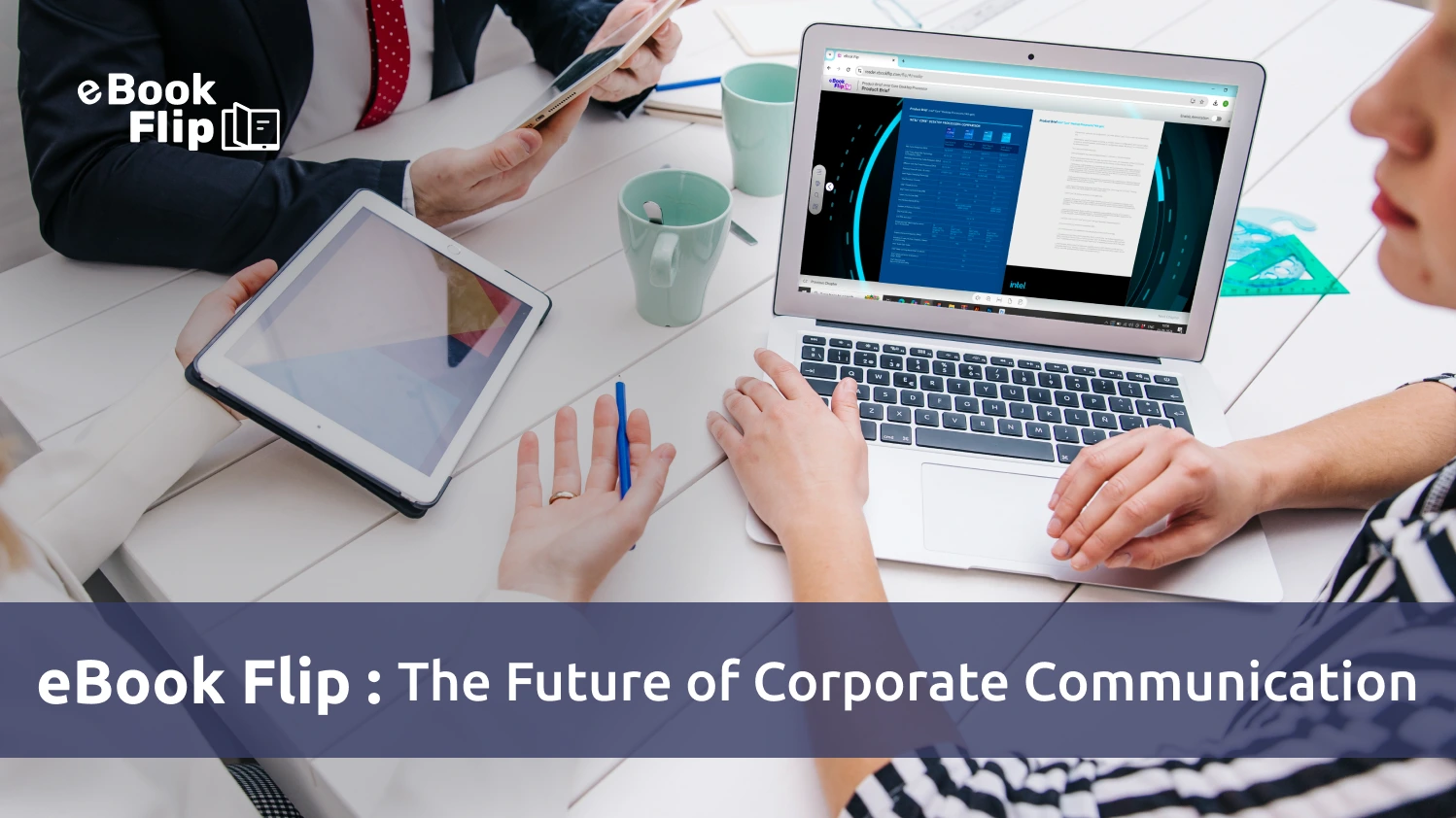Transforming Corporate Communication: The Flipbook Revolution

In an era where attention is a precious commodity, businesses are constantly seeking innovative ways to cut through the noise and connect with their audience. Enter the digital flipbook - a dynamic, interactive tool that's reshaping the landscape of corporate communication. Let's dive into how this engaging format is breathing new life into the way companies share information, both internally and externally.
The Evolution of Corporate Messaging
Gone are the days when a simple memo or lengthy email could effectively convey complex ideas. Today's fast-paced business environment demands more - more engagement, more interactivity, and more visual appeal. This is where flipbooks shine, offering a fresh approach to presenting information that captures attention and fosters deeper understanding.
Flipbooks: More Than Just Pretty Pages
At first glance, a flipbook might seem like a glorified digital brochure. However, if you dig a little deeper, you'll find a powerhouse of communication potential. These interactive documents are transforming how businesses approach everything from annual reports to product catalogs, and here's why:
- Simplifying the Complex: In the corporate world, data is king. Yet raw numbers can be overwhelming and, let's face it, a bit dull. Flipbooks allow companies to transform dry statistics into vibrant, interactive visuals. Imagine clicking through a 3D chart that brings quarterly results to life, or exploring an interactive map that showcases global operations. Suddenly, complex data becomes not just digestible, but engaging.
- Boosting Employee Engagement: Internal communication often feels like a one-way street. Online flipbooks change this dynamic, turning passive readers into active participants. By incorporating elements like embedded videos, clickable infographics, and even quizzes, companies can create internal documents that employees actually want to engage with. The result? Better informed, more connected teams.
- Elevating Brand Storytelling: In today's competitive marketplace, a strong brand identity is crucial. Flipbooks offer a canvas for companies to showcase their personality and values in ways that static documents simply can't match. From animated logos to interactive timelines that chart a company's history, these features allow businesses to tell their story in a compelling, memorable way.
- Enhancing Stakeholder Relations: When it comes to communicating with external stakeholders, first impressions matter. Flipbooks enable companies to present information in a polished, professional format that resonates with investors, partners, and customers alike. Interactive annual reports, for instance, can bring financial data to life, while clickable product catalogs offer an immersive shopping experience.
Implementing Flipbooks: Best Practices
Ready to flip the script on your corporate communication? Here are some tips on how to create a flipbook:
- Start with a Strategy: Identify key areas where visuals and interactivity can add the most value to your communication efforts. For example, if you have a text-heavy document that needs to go out to a larger audience, that may be a good place to start.
- Keep It User-Friendly: While bells and whistles are exciting, always ensure your flipbook remains intuitive and easy to navigate. This can be done by adding an interactive table of contents or using thumbnails to streamline navigation.
- Optimize for All Devices: In our mobile-first world, your digital flipbook should look and function seamlessly across all screen sizes. It should also offer flexible viewing modes, easily switching between portrait and landscape views.
- Integrate Analytics: Use built-in tracking tools to measure engagement and refine your approach over time. These tools can give you details on your best or worst performing content pieces, the amount of time readers spend on your content, and the number of readers who actively engage with it.
- Stay On-Brand: While exploring new interactive features, ensure your flipbook aligns with your overall brand identity. To do this, enlist the help of a white labeled flipbook maker such as eBook Flip.
Real-World Impact: Success Stories
Let's look at how some forward-thinking companies are leveraging flipbooks to revolutionize their communication:
- A global tech firm transformed its onboarding process with an interactive product manual, resulting in a 40% increase in information retention among new hires.
- A food processing company used a flipbook template to create an interactive report, leading to a 25% increase in investor engagement.
- A luxury car manufacturer's interactive product catalog saw a 50% increase in time spent browsing, translating to higher conversion rates.
Conclusion
Flipbooks are clearly more than just a trendy communication tool - they represent a fundamental shift in how businesses connect with their audiences. By embracing this interactive format, companies can transform their communication from a monologue into a dynamic, two-way conversation. And in this digital age, where engagement is currency, flipbooks offer a golden opportunity to captivate, inform, and inspire.
As we look ahead, the potential for flipbooks in corporate communication is boundless. With advancements in augmented reality and artificial intelligence, we can envision flipbooks that offer even more personalized, immersive experiences.
The question is, will your business be ready to embrace the change? If you want to flip the page on traditional corporate communication, visit eBook Flip today!
